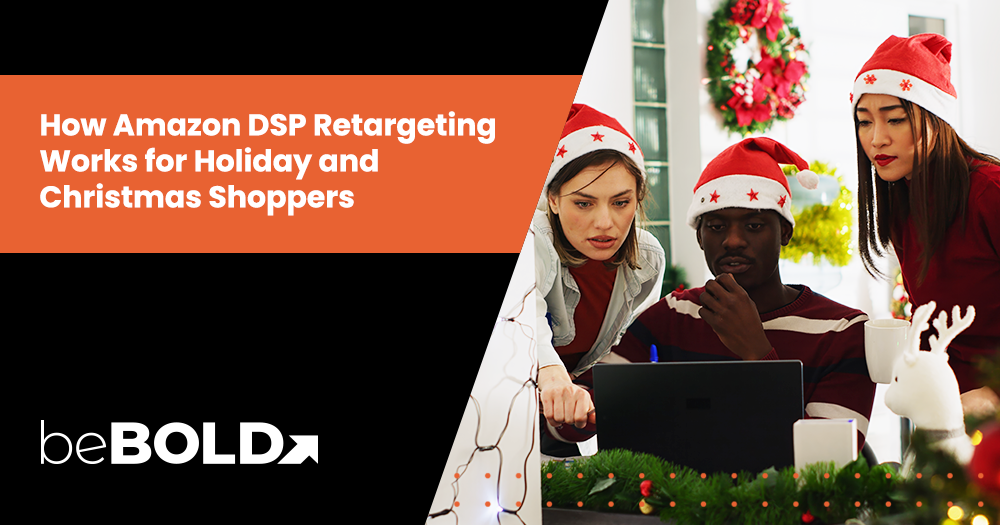Key Highlights
- Running Amazon ads 24/7 isn’t strategy—it’s wasted spend.
- Dayparting puts your ad budget where your buyers are—exactly when they’re ready to convert.
- Smart scheduling can be the difference between profitable scaling and silent budget leaks.
- Top-performing brands align ad delivery with customer intent—not just time zones.
- Dayparting isn’t a tactic, it’s a system: built on data, automation, and real-time optimization.
- Timing your bids by conversion behavior leads to higher ROAS and lower ACoS.
- One-size-fits-all schedules flatten campaign potential—segmentation unlocks real efficiency.
- Automation platforms like Pacvue and Intentwise turn dayparting from guesswork into precision targeting.
- BeBOLD partners with brands to engineer smarter dayparting strategies that fuel high-intent conversions at scale.
- Done wrong, dayparting creates more complexity than control—execution matters.
- The brands that win don’t just advertise smarter—they advertise sharper.
Still running your Amazon ads 24/7? That’s not strategy—that’s waste. If you're not controlling when your ads show, you're likely bleeding thousands in spend every month. Because your buyers aren't online all day—and they definitely aren't converting at 3AM.
That’s where Amazon PPC Dayparting comes in. It’s the move top sellers are already using to dominate high-intent hours, throttle back during dead zones, and squeeze maximum profit from every dollar spent.
Dayparting puts you in control. You decide exactly when your ads run, when your bids go up, and when to pause spend entirely. It’s precise. It’s aggressive. And when done right—it’s a game-changer.
If you’re still relying on blanket ad schedules, you’re leaving efficiency (and profit) on the table. Let’s fix that.
What Is Amazon PPC Dayparting—and Why It Actually Matters?
Amazon PPC Dayparting—also referred to as ad scheduling—is the practice of controlling when your ads run based on time-of-day and day-of-week data. But it’s not just about setting a clock. It's about engineering your ad spend to align with buyer behavior, sales velocity, and conversion efficiency.
Instead of running ads 24/7 and hoping the algorithm figures it out, dayparting gives you control over when not to spend.
That means shutting down low-converting time windows, avoiding high CPC hours with low ACoS payoff, and leaning hard into the exact periods when buyers are most active and ready to purchase.
Timing Is Everything: Aligning Ad Spend with Buyer Intent

Every product has its own rhythm. Some convert best on weekday mornings. Others spike in the evening or during weekend browsing surges.
Dayparting lets you tailor ad schedules to those patterns using real data—either from Amazon’s own reports, DSP insights, or third-party analytics tools.
Done right, this strategy does more than save budget. It enhances your campaign efficiency by focusing impressions and bids on intent-rich windows, where click-through rate (CTR) and conversion rate (CVR) are both higher. That’s where the real return is—not in throwing budget at dead traffic hours but in syncing ad visibility with actual purchase intent.
Dayparting also plays a critical role in campaign scaling. By knowing when your ROAS peaks, you can reinvest aggressively in those windows, push bids higher with confidence, and pull back during low-impact periods without compromising performance. It's controlled, predictable scaling—not guesswork.
Comparing PPC: Performance vs. Dayparting for Smarter Ad Spend
While performance rules dictate the effectiveness of ads overall, dayparting allows you to target specific hours or days based on customer behavior patterns. Balancing these strategies will help you optimize impressions during peak times while maintaining strong campaign performance across the board.
Here is a quick comparison.
|
Aspect |
Performance Rules |
Dayparting (Schedule) |
|
Purpose |
Focus on consistent campaign performance. |
Focus on maximizing visibility during peak customer engagement. |
|
Key Focus |
Optimizing ad content, bids, and targeting based on historical data. |
Scheduling ads to run at specific times when customers are active. |
|
Optimization |
Refining ads based on metrics like CTR, CVR, and ROAS. |
Adjusting bids and schedules based on peak traffic hours. |
|
Strategy |
Set KPIs, continuously A/B test, and adjust based on data. |
Use historical data to schedule ads during peak periods. |
|
Monitoring & Adjustment |
Real-time monitoring of campaign metrics and making data-driven changes. |
Hourly monitoring of performance to adjust bids and budgets. |
|
Goal |
Maximize long-term ROI and efficient ad spend. |
Achieve higher conversions through timely ad visibility. |
Benefits of Amazon PPC Dayparting: Why Smart Timing Drives Results?

Amazon PPC Dayparting is about precision—showing your ads at the exact time your audience is most likely to engage and convert. Beyond just scheduling, it allows you to maximize every dollar of your ad spend. Here's how dayparting creates real impact:
1. Laser-Focused Budget Efficiency

Dayparting enables you to allocate your ad spend only during high-performing hours, avoiding waste on periods of low engagement. By using historical performance data, you can direct more budget to the hours that yield the best returns.
Example: If you're selling premium coffee beans, you might notice higher conversion rates in the early morning hours when users are most interested in reordering supplies or upgrading their brewing setup.
2. Intent-Driven Ad Timing
Instead of guessing when customers might be shopping, dayparting lets you align ad visibility with peak intent hours. Whether it's weekend mornings for household products or late-night browsing for tech, this approach helps you be present exactly when shoppers are ready to buy.
3. Behavior-Based Campaign Relevance
Dayparting supports deeper audience segmentation. You can tailor your messaging and delivery schedule based on distinct behaviors (e.g., mobile-first evening shoppers vs. desktop users during work hours), making your ads more relevant, timely, and personalized.
4. Improved Ad Experience and Engagement
Overexposing your audience to the same ads can lead to fatigue. With dayparting, you can rotate creatives or limit ad frequency during certain time slots—keeping your campaigns fresh and engagement high.
Example: A skincare brand might rotate different messaging in the morning (“Start Your Day Right”) and evening (“Night-Time Recovery”) to stay fresh and contextually relevant.
5. Better Use of Automation
Paired with tools like beBOLD Digital, dayparting allows for automated bid adjustments without constant manual tweaking. You gain agility while maintaining control, allowing your campaigns to react to performance shifts in real-time.
Strategies for Amazon PPC Dayparting: How to Build a Performance-Driven Plan?

To get results from dayparting, you need more than just toggling campaigns on and off. Here are the core strategies that make dayparting effective:
1. Use Data to Uncover Your Ad Timing Sweet Spots
Start with a detailed analysis of traffic, CTR, conversion rates, and ACoS across different hours and days. Use Amazon reports and third-party tools to identify high-performing time slots and understand your audience’s shopping rhythm.
2. Define and Prioritize Peak Engagement Windows
Based on your data, outline the exact time blocks when performance is strongest. These “golden hours” should become the focus of your most aggressive bidding strategies, while off-peak times can be deprioritized or excluded entirely.
Example: A snack brand may notice spikes in conversion around 4 PM, aligning with typical afternoon cravings—making it a key window for competitive bidding.
3. Customize Campaigns by Product and Buyer Type
Different products and audiences have different time-based patterns. Structure your campaigns to reflect this. For example, run separate campaigns for weekend-centric items vs. weekday-use products. This allows for fine-tuned bidding and creative messaging.
4. Leverage Automation for Real-Time Adjustments
Use platforms like Pacvue, Perpetua, or Intentwise to create rule-based bidding strategies. Automate actions like:
- Boosting bids during high-ROAS windows
- Reducing spend when CPC spikes or conversions dip
This ensures precision at scale while reducing manual workload.
5. Reassess Timing Regularly Based on New Trends
Buyer behavior evolves—seasonality, new competitors, or even external events (like holidays) can shift peak times. Make sure your dayparting strategy is flexible and data-backed, not static.
What Do Experts Do Differently with Dayparting?

Once you’ve implemented dayparting, the real performance lift comes from refining and optimizing your approach. Here are best practices that separate average results from elite-level performance:
1. Use Time-Decay Attribution to Track True Conversion Lag
Not all purchases happen immediately after a click. Time-decay attribution models help you understand delayed conversions, so you don’t mistakenly undervalue certain hours or pause bids prematurely.
Example: A shopper may click an ad for luggage in the afternoon, compare options throughout the day, and complete the purchase later in the evening. Without time-decay attribution, the afternoon slot may seem underperforming.
2. Sync Your Dayparting Strategy with Inventory & Profit Margins
Avoid running high-bid campaigns when stock levels are low or margins are thin. By connecting your ad scheduling with real-time inventory, you ensure you're investing when it truly pays off.
Example: A kitchen appliance brand can scale back ads during out-of-stock periods to avoid wasted spend or negative reviews due to fulfillment delays.
3. Factor in Off-Amazon Trends to Predict Demand Surges
Monitor external signals like Google Trends, TikTok virality, or influencer campaigns that could affect buying patterns. This gives you a competitive edge in spotting and bidding on emerging peak windows before others catch on.
Example: “Stanley Cup Tumbler” Trend
Before Stanley Cups exploded on Amazon, they gained traction on TikTok through viral hydration videos and influencer shoutouts.
Google Trends data showed this clearly:

Search interest for “Stanley Cup tumbler” surged between 2023- 45.
4. Separate Schedules for Branded vs. Generic Keywords
Not all keywords behave the same. Branded searches often convert well during off-hours, while generic or discovery keywords may need high visibility during prime times. Use distinct dayparting rules for each campaign type.
5. Run Controlled Experiments and Document Changes
Treat every schedule change as a test. Define a clear hypothesis, isolate one variable at a time, and track results. This helps you attribute performance shifts accurately and scale what works with confidence.
Are You Prepared to Execute Dayparting? Check These Essentials First

Before you jump into dayparting, ensure you have the right infrastructure and insights to support it. Here's your pre-implementation checklist:
1. Map Shopper Intent by Time, Not Just Activity
Look beyond traffic volume. Analyze deeper intent signals like session depth, add-to-cart rate, and conversion lag. Understand the difference between browsing behavior and actual buying windows.
2. Define Hour-Level KPIs That Justify Time-Based Bidding
Dayparting only works if you’re tracking granular KPIs such as:
- Hourly CTR, ACoS, and ROAS
- Conversion trends by device type
- CPC fluctuations across time blocks
These metrics will tell you when to push bids and when to pull back.
3. Analyze Product-Specific Timing Patterns and Seasonality
Different products have different time cycles. Identify whether your sales are tied to paydays, weekdays vs. weekends, or seasonal peaks. Layer this with time-of-day performance to find the best ad windows.
Example: A seller of exam prep books may experience spikes during academic semesters and evenings when students are actively browsing study materials.
4. Stress-Test Your Budget Flexibility
Ask yourself:
- Can you support 2x–3x bid increases during peak hours?
- Do you have enough budget to scale campaigns across multiple time zones?
Make sure your budget aligns with your bidding strategy and campaign segmentation.
5. Confirm Tool Compatibility and Rule Configuration
Ensure your ad tools can:
- Handle multi-level hourly rules
- Stack logic (e.g., performance + budget + time triggers)
- Report performance at the hourly/ad group level
If you're using native Amazon tools, understand their limitations so you don’t overcommit.
Need a Clear Plan for Amazon Dayparting? Follow These Steps
Implementing Amazon PPC dayparting requires a strategic approach. This guide walks you through each step to help you run campaigns at optimal times, reach the right audience, and maximize your PPC ROI.
Step 1: Identify Your Target Audience
Start by understanding who you're targeting.
Are your customers:
- Working professionals who shop in the early morning or late evening?
- Younger, tech-savvy shoppers who are active around midday?
Tailoring your ad schedule to align with your audience’s shopping behavior is key to effective dayparting.
Step 2: Dive into Data Analysis

Use historical sales and traffic data to uncover when your audience is most active.
Focus on metrics like:
- Conversion rates
- Click-through rates
- Sales volume
Tools like Scale Insights and Amazon Marketing Stream can help pinpoint high-performance hours or days.
Step 3: Set Up Time-Specific Campaigns
Create separate campaigns or ad groups for different time blocks.
For example:
- A morning campaign (6 AM – 10 AM)
- An evening campaign (6 PM – 10 PM)
Avoid running generic all-day campaigns. Instead, break your strategy into highly targeted, time-specific efforts.
Step 4: Adjust Bids by Time of Day
Optimize your bids based on performance:
- Increase bids during high-conversion hours
- Lower bids during off-peak times to conserve budget
This ensures you’re spending smartly and showing up when your audience is most likely to convert.
Step 5: Monitor Campaign Performance
Keep an eye on:
- Click-through rate (CTR)
- Conversion rate
- Return on ad spend (ROAS)
Consistent tracking helps you gauge what’s working and where adjustments are needed.
Step 6: Optimize Based on Insights
Use performance data to fine-tune:
- Bids
- Ad schedules
- Targeting
- Ad creatives
If a time slot underperforms, pivot accordingly. Optimization should be ongoing, not a one-time task.
Step 7: Scale Up with Confidence
Once you know what works:
- Increase budget for top-performing time slots
- Expand to new time windows or audience segments
- Use automation tools to manage campaigns efficiently
Scaling becomes easier when you have solid data and a tested strategy in place.
Downside to Amazon PPC Dayparting: Challenges You Should Know Before Execution

Dayparting sounds like a winning strategy—and it can be. But before you jump in, it's important to understand the trade-offs. This strategy brings precision, but it also demands planning, tools, and time. Here’s what to watch out for.
1. More Control = More Complexity
Managing multiple campaigns can get messy—fast.
When you break your day into segments, what used to be one campaign could become five. That means:
- More campaign setup
- More bid adjustments
- More scheduling headaches
If you're not ready for the added workload, dayparting can overwhelm your workflow.
2. Data Is Your Compass—But It’s Not Always Reliable
Poor data or shifting behavior can steer you wrong.
Dayparting decisions live and die by performance data. But:
- Not enough historical data? You’re guessing.
- Seasonal trends or marketplace shifts? What worked last month might flop today.
- Competitor moves? They can shake things up without warning.
If your insights aren’t rock-solid and regularly updated, your strategy can quickly go off course.
3. Visibility Gaps Can Cost You Sales
When your ads sleep, so do your opportunities.
Over-segmenting your campaign hours can lead to:
- Missing out on shoppers browsing outside your chosen time blocks
- Losing traffic in international markets due to time zone mismatches
The tighter your ad windows, the greater the risk of flying under your customer’s radar.
4. Budgeting Becomes a Balancing Act
Misaligned spend can burn your budget or mute your reach.
Without the right balance, you might:
- Overspend during low-converting hours
- Underspend when your audience is most ready to buy
- Rely too heavily on automation that still needs manual fine-tuning
To get it right, you’ll need to constantly adjust and monitor where your money goes—and when.
5. It’s Not a One-Time Setup—It’s an Ongoing Commitment
You can’t set it and forget it. Period.
To keep dayparting effective, you’ll need to:
- Regularly monitor performance
- Adjust bids and schedules
- React to behavior shifts and trends
Without consistent maintenance, performance will slip and ROAS will take a hit.
Also read- How long does it take for Amazon PPC to work?
Overwhelmed by Split Schedules and Bid Rules? We’ve Got You
Let’s say you’ve identified your peak hours. You’ve mapped your audience behavior. You’ve even set up campaign splits by time blocks. But now what?
You’re knee-deep in spreadsheets, bid rules, and performance graphs that change by the hour. One SKU is surging at 9 PM, another tanks mid-afternoon, and your ROAS dashboard looks like a heartbeat monitor.
Sound familiar?
That’s the reality for a lot of brands. Dayparting isn’t just a switch you flip—it’s a system you manage. And when you're juggling 20+ ASINs, new product launches, and weekly inventory updates, managing ad schedules manually becomes more than inefficient—it becomes unsustainable.
That’s where beBOLD Digital steps in. We're not here to run your basic campaigns—we’re here to help you scale what works and fix what doesn't. For brands we work with, we:
- Build custom dayparting strategies based on real-time shopping trends
- Automate campaign adjustments so you’re not refreshing reports at midnight
- Align ad timing with inventory levels and seasonality shifts
- Catch underperforming time blocks before they drain your budget
Our team has helped brands in categories like beauty, baby, and pet supplies reclaim hours of lost time and thousands in wasted spend—just by making their ad schedules smarter.
Your Buyers Aren’t Shopping 24/7. Your Ads Shouldn’t Run That Way. → Book a free audit and see what dayparting can do for your ROAS.
Conclusion
Effective Amazon PPC Dayparting involves starting with broad time windows, focusing on day and time precision, continuous testing and iterating, and aligning dayparting strategies with seasons and shopping events to enhance your Amazon PPC campaigns. Understanding your target audience, utilizing historical data, and leveraging automated tools make the strategy more efficient.
So the question isn’t “Should I try dayparting?”
The real question is: “What would my results look like if my ads only ran when my buyers were most ready to convert?”
If you’re ready to answer that with results, not guesses—start building the infrastructure. Or find a partner who already has it dialed in.
Because timing isn’t a guess. It’s a competitive edge.
Frequently Asked Questions
Should I Run Amazon Ads All Day or Use Dayparting?
Running PPC ads 24/7 may sound efficient, but it often leads to wasted ad spending during off-peak hours. A strong Amazon advertising strategy involves the practice of scheduling ads to run during specific times of the day when your target customers are actively browsing or buying. Dayparting helps you capitalize on peak shopping times and avoid budget drain during low-conversion periods.
How Often Should I Adjust My Amazon PPC Dayparting Strategy?
A good dayparting strategy isn’t set-and-forget. You should revisit your schedule on at least a weekly or hourly basis, especially during dynamic events like Black Friday, Prime Day, or the holiday season. Tracking daily data and performance metrics lets you fine-tune schedules based on real-world shifts in consumer behavior and shopping habits.
Can Dayparting Be Used for All Types of Amazon Ads?
Yes, dayparting can be applied across all ad types—Sponsored Products, Sponsored Brands, and Display Ads. However, the benefits of dayparting can vary based on different time slots, your product category, and your Amazon advertising strategy. For example, ad visibility for beauty products might peak in the evening, while office supplies perform best during work hours.
What Is the Daily Budget in Amazon Ads?
Your daily budget is the cap you set for ad spending each day on a campaign. When using dayparting, you can add budget rules to ensure that spend is concentrated during times of the day with higher ROAS. This lets you scale efficiently without overspending during low-intent periods.
What Are Some Effective Tips for Amazon PPC Dayparting?
Start by analyzing historical sales data to identify high-performing hours and days of the week. Test different time slots using A/B testing, monitor hourly data, and optimize based on what drives the highest conversions. Also, align your dayparting schedule with events like the holiday season or promotional days when there’s less competition in your niche.
Does Dayparting Work in All Amazon Marketplaces?
Yes, but like all aspects of Amazon advertising, effectiveness varies by region. Amazon sellers should adapt their schedules to local consumer behavior, time zones, and peak shopping times unique to each marketplace. Tools like Amazon Marketing Cloud can offer deeper insights into these patterns.
Timing Is Your Edge. Let’s Help You Use It. → Talk to a dayparting expert at beBOLD Digital









Comments